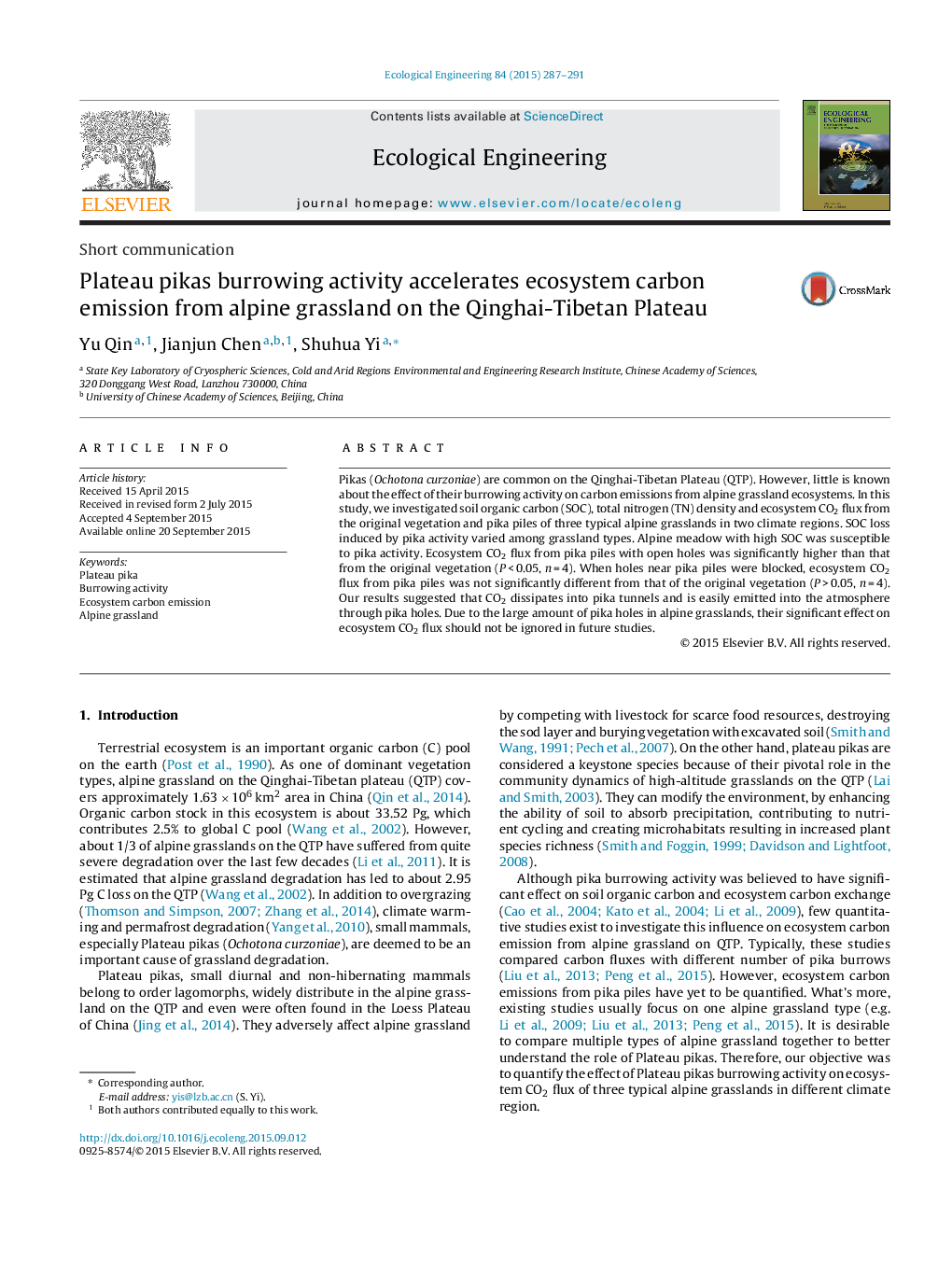| Article ID | Journal | Published Year | Pages | File Type |
|---|---|---|---|---|
| 4388794 | Ecological Engineering | 2015 | 5 Pages |
•Plateau pika burrowing activities decreased SOC and TN density.•Plateau pika burrowing activities enhanced ecosystem carbon emission.•Ecosystem CO2 dissipated into pika tunnel and easily emitted into atmosphere through pika hole.
Pikas (Ochotona curzoniae) are common on the Qinghai-Tibetan Plateau (QTP). However, little is known about the effect of their burrowing activity on carbon emissions from alpine grassland ecosystems. In this study, we investigated soil organic carbon (SOC), total nitrogen (TN) density and ecosystem CO2 flux from the original vegetation and pika piles of three typical alpine grasslands in two climate regions. SOC loss induced by pika activity varied among grassland types. Alpine meadow with high SOC was susceptible to pika activity. Ecosystem CO2 flux from pika piles with open holes was significantly higher than that from the original vegetation (P < 0.05, n = 4). When holes near pika piles were blocked, ecosystem CO2 flux from pika piles was not significantly different from that of the original vegetation (P > 0.05, n = 4). Our results suggested that CO2 dissipates into pika tunnels and is easily emitted into the atmosphere through pika holes. Due to the large amount of pika holes in alpine grasslands, their significant effect on ecosystem CO2 flux should not be ignored in future studies.
